15.03.2024
Shoebox-sized Milani CubeSat joining Hera asteroid mission
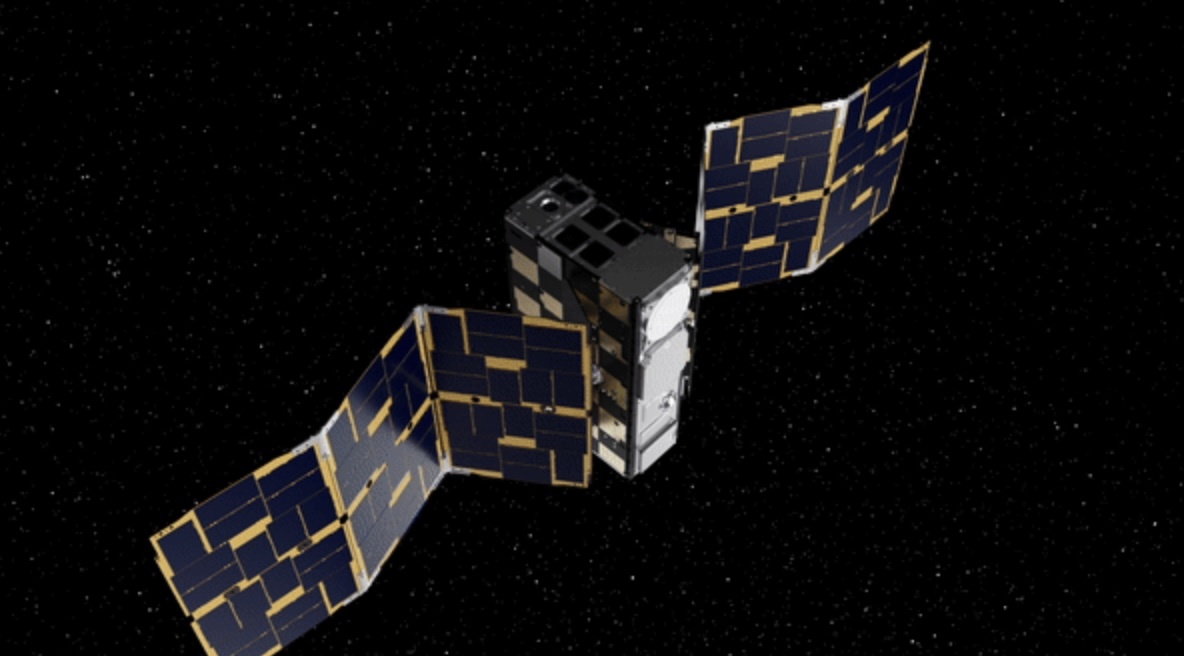
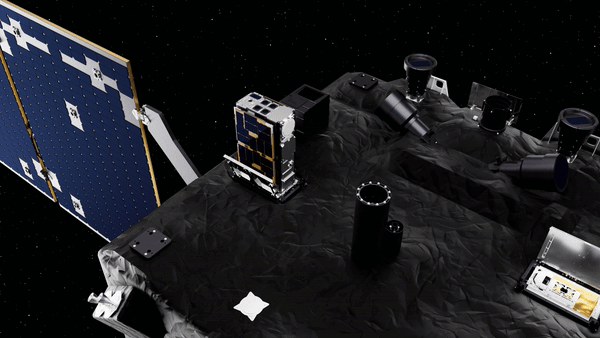
The shoebox-sized Milani CubeSat, which will perform close-up mineral prospecting of the Dimorphos asteroid, is ready for delivery to ESA’s Hera asteroid mission for planetary defence. The spacecraft will carry Milani and a second CubeSat, the Juventas radar imaging spacecraft for probing into the target asteroid, which together will be ESA’s first CubeSats to operate in deep space.
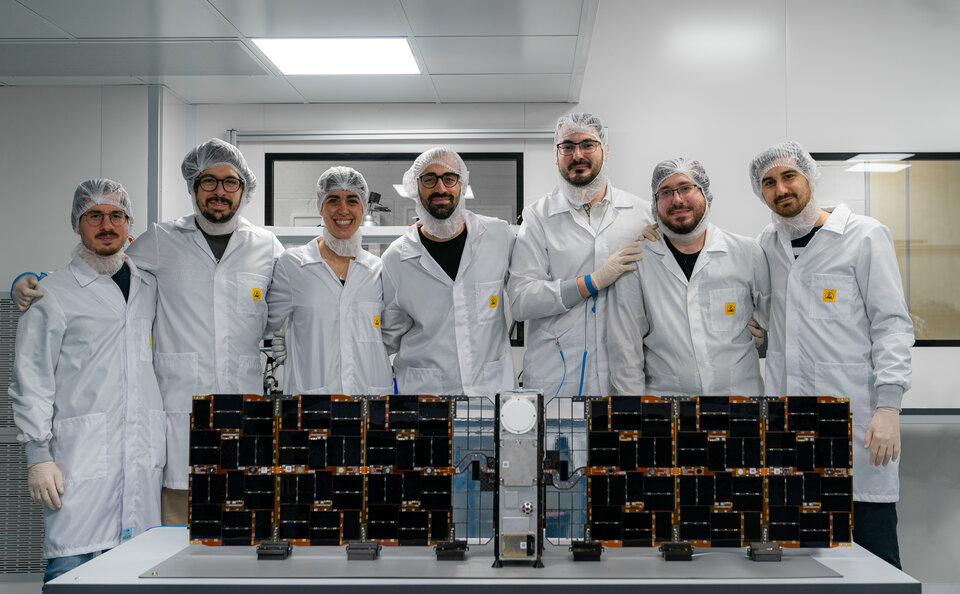
Funded through the Italian Space Agency, ASI, the Milani CubeSat was shown to the press at the premises of its prime contractor Tyvak International in Turin. It will now be flown to ESA’s ESTEC Test Centre in the Netherlands, where Hera is currently undergoing pre-flight testing, for integration with its mothership and subsequent validation of the inter-satellite link system that will connect Hera, Milani and Juventas as they fly around the Didymos system.
“This is a paramount achievement for Tyvak International,” explains Margherita Cardi, VP Programmes for Tyvak International and Milani Programme Manager. “Milani is now ready to be delivered to ESA and undergo the system tests with Hera, to ensure the validation of the interfaces and the end-to-end communication prior to the launch. The journey is not over, but we are a step closer to Didymos, and it was a real honour to host here at Tyvak all the persons who contributed to this amazing project and celebrate together this achievement.”
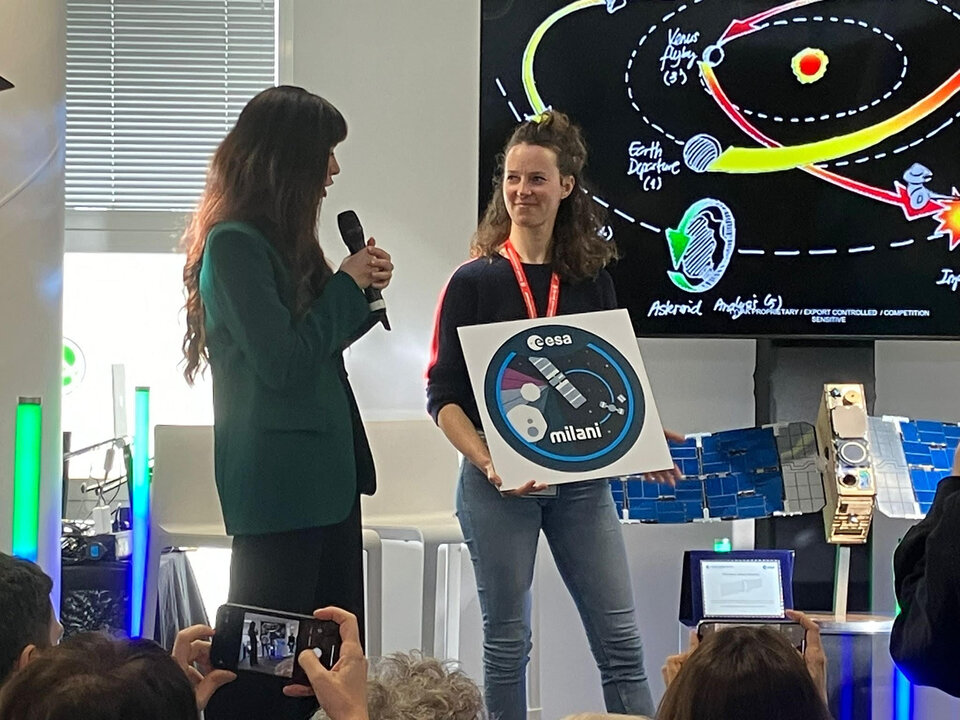
Origin of Hera mission
Also present at Milani’s delivery event was Alice Milani, daughter of the man the CubeSat was named for. Andrea Milani, professor of mathematics at the University of Pisa, was a planetary defence pioneer who first devised what became ESA’s Near Earth Object Coordination Centre, based at the Agency’s ESRIN centre in Frascati, Italy. Then in 2004 he proposed the idea of a double spacecraft planetary defence mission called Don Quijote. One spacecraft – called Hidalgo – would impact a non-threatening asteroid while another spacecraft – called Sancho – would gather data to validate asteroid impact models.
His proposal evolved into the NASA’s DART mission (formerly Hidalgo) – which in 2022 diverted the orbit of Dimorphos around Didymos – and the follow-up Hera mission (formerly Sancho) to gather close-up data on the mass and makeup of the asteroid and DART’s impact site. Sadly, Andrea never lived to see the implementation of his idea, passing away unexpectedly in 2018.
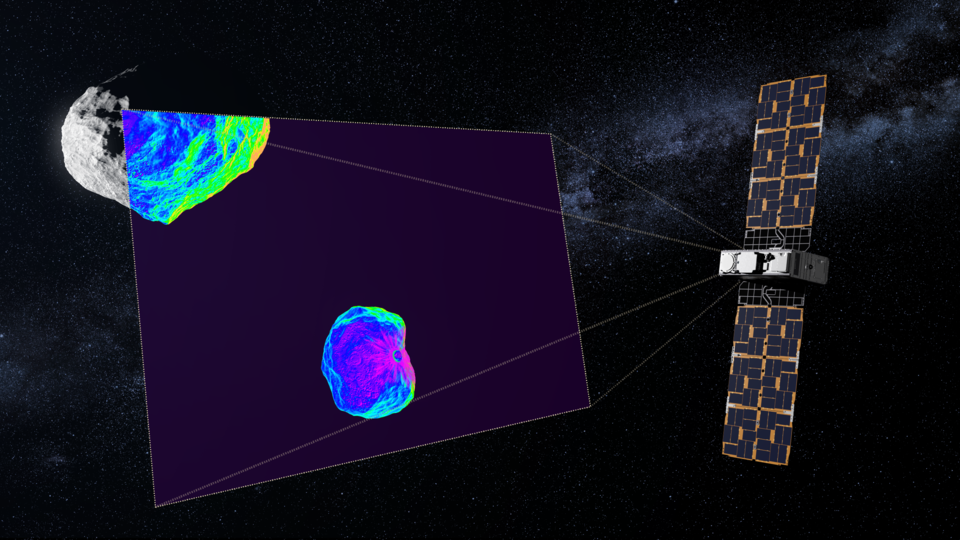
Milani to stay linked with its mothership
Milani will survey Dimorphos as well as the larger Didymos object that the asteroid orbits around in a wider range of colours than the human eye can see, to identify the mineral makeup of the asteroids and even individual boulders resting on them. It will also survey the dust environment surrounding these bodies. And the inter-satellite link system between the Hera mothership and its smaller companions will track small tugs in their relative positions due to the gravitational pulls of the asteroids, helping to assess their mass.

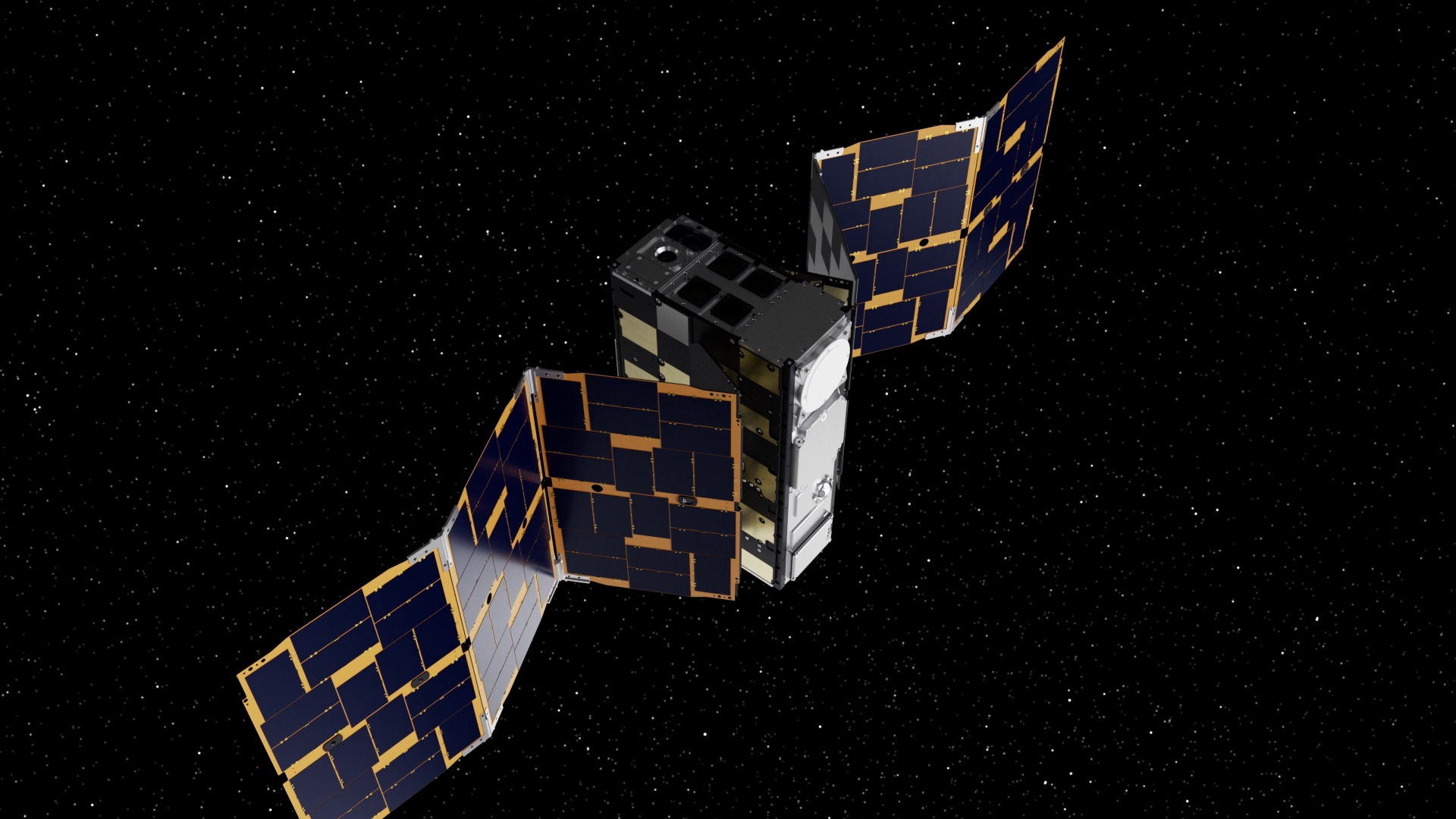
Access the video
But the miniature Milani is also a full-fledged spacecraft in its own right, incorporating a visible light camera, laser altimeter and star trackers for navigation, plus a cold gas propulsion system. While Hera will orbit about 20 – 10 km from the asteroids, Milani will risk lower altitudes, starting at 10 km and coming as close as 2 km. Going into a traditional orbit around the Didymos system is impractical because of its extremely low gravity. Instead Milani will fly a series of ‘hyberbolic arcs’ in its vicinity, like repeated flybys involving its thrusters regularly changing direction to remain as close as required.
Finally, Milani will attempt a landing on Dimorphos. Its onboard gyros and accelerometers will gather valuable data on the landing and any subsequent low-gravity bounces, to give insight into the surface properties of the asteroid.
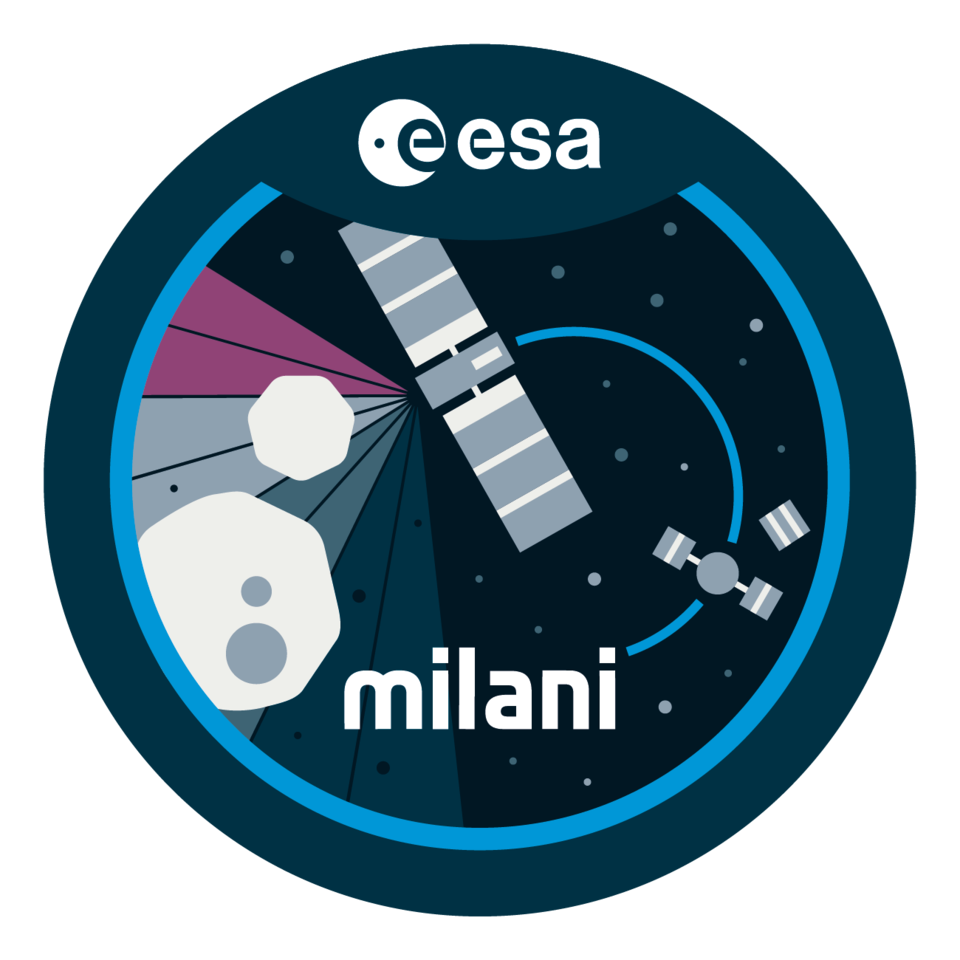
First ESA CubeSats in deep space
CubeSats are small, low-cost satellites built up from 10 cm boxes, traditionally employed for educational purposes but increasingly finding operational uses in Earth orbit. Milani and Juventas will be the first ESA CubeSats to remain several months in deep space, operating in close proximity to a small Solar System body.
They will spend Hera’s two-year cruise phase to Didymos inside a pair of ‘Deep Space Deployers’ which will keep them alive and healthy. The pair will be deployed one at a time, starting with a partial deployment to check each CubeSat’s functionality. Finally, they will be deployed at just a few centimetres per second – any faster and they would risk being lost in space within the prevailing low gravity.
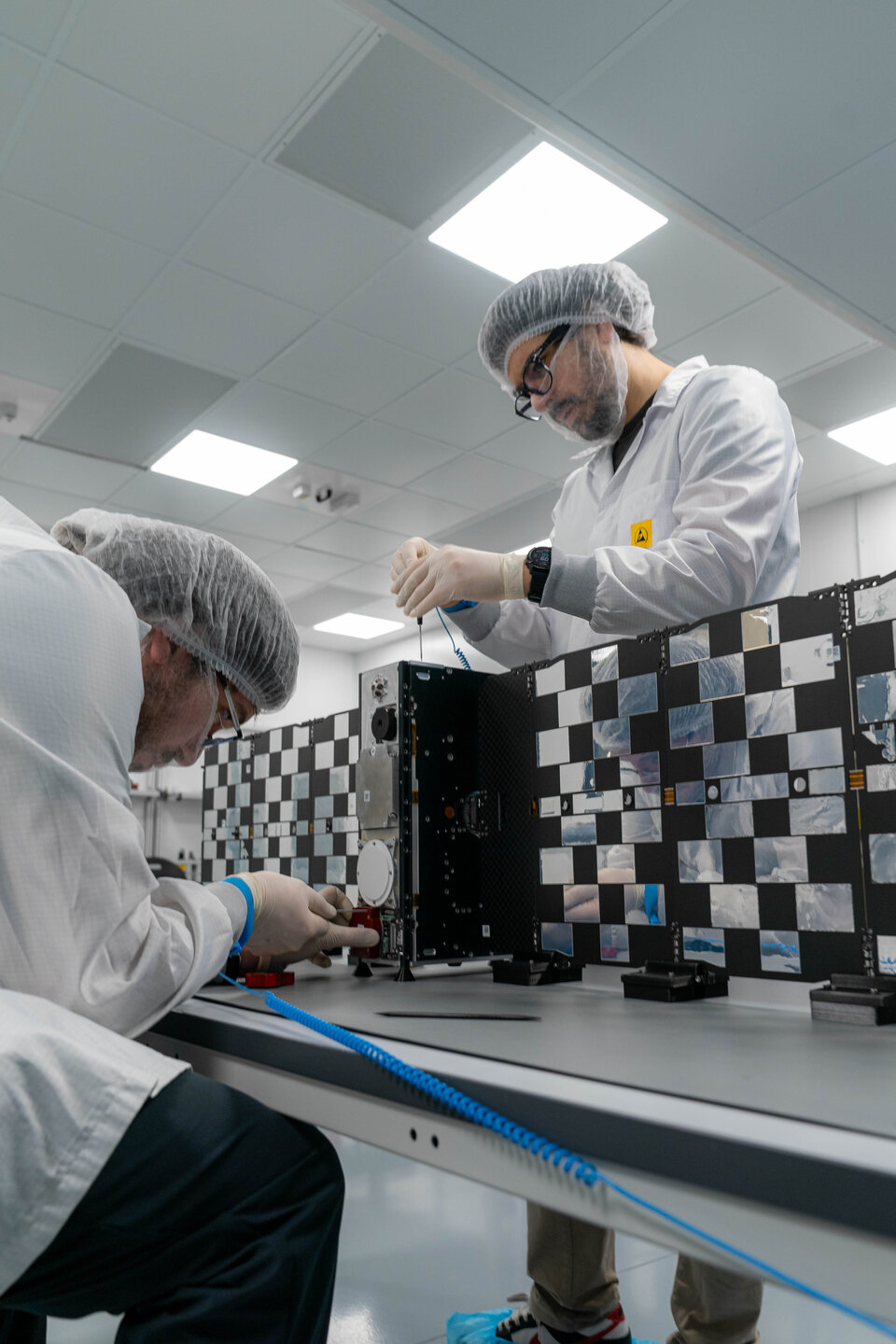
Milani instruments
Milani is a ‘6-unitXL’ CubeSat measuring just 13 x 24.6 x 36.6 cm in size. On one side of Milani are the four sensors of its main ASPECT, Asteroid Spectral Imager, instrument developed by the VTT Technical Research Centre of Finland, which will image the asteroids in visible, near and shortwave infrared bands.
“ASPECT is a hyperspectral imager whose heritage goes back to a series of instruments flown on drones, variously used for agricultural, forestry and pollution monitoring,” explains Antti Näsilä, Principal Scientist and ASPECT project manager at VTT.
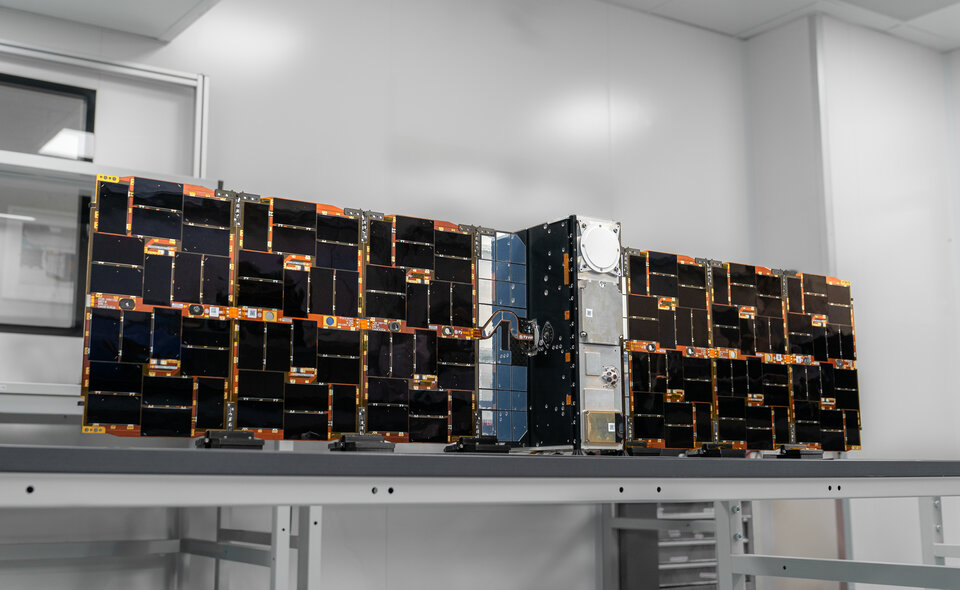
“So the miniaturisation involved meant that switching to CubeSats was a straightforward transition, and a predecessor version of the instrument flew on Finland’s first CubeSat, Aalto-1 in 2017. But despite ASPECT’s small size it is extremely complex, with each of the four channels requiring roughly 50 control signals each, criss-crossing through the instrument.”
MILANI’s second instrument is VISTA, Volatile In-Situ Thermogravimetre Analyser, an Italian-built dust detector. This is based on quartz microcrystals whose piezoelectric responses are altered slightly by the adhesion of tiny dust particles.
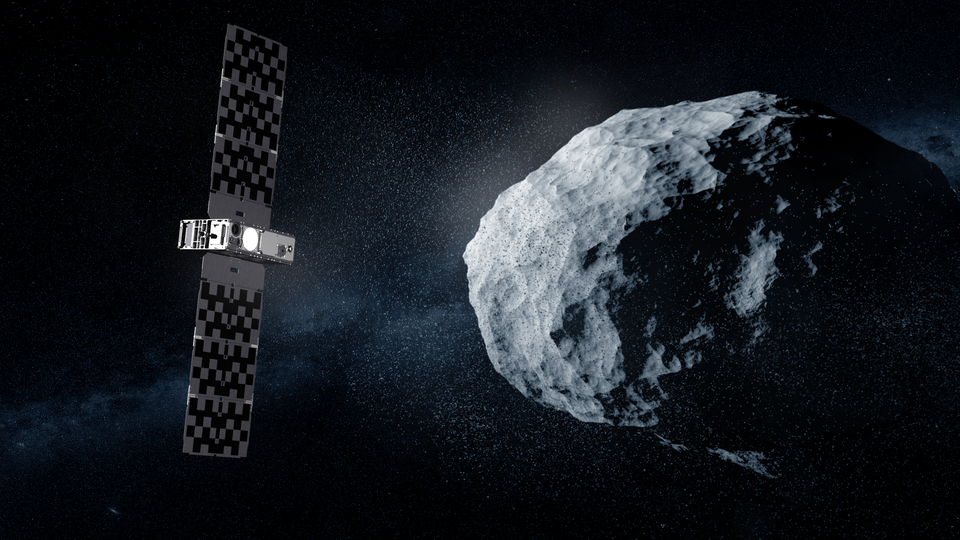
Ernesto Palomba of Italy’s Istituto di Astrofisica e Planetologia Spaziali, VISTA’s principal investigator, explains: "On Earth this same precision technology is used in analytical laboratories and checking thin film deposition processes. VISTA will use it to identify water and other volatile species around the asteroids, as well as the presence of dust. We hope our instrument will be able to keep operating even on the surface of Dimorphos.”
Hera’s ESA system engineer Franco Perez Lissi Comments: ”ESA’s first deep-space CubeSat was developed in record time by an incredible team. ESA is extremely impressed by the skills, motivation and commitment of Tyvak International. We are eager to see the spacecraft in action, helping us to unveil the many mysteries of the Didymos asteroid system.”



